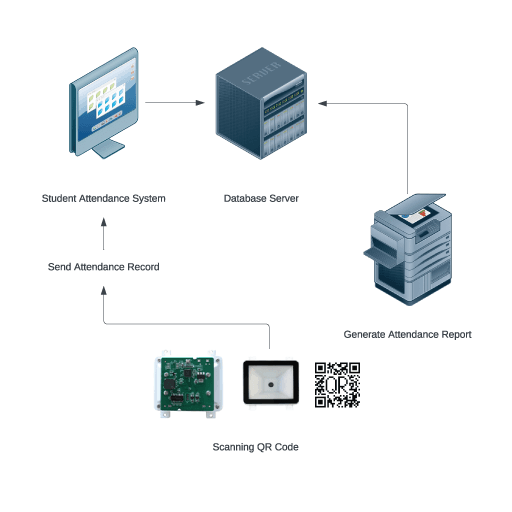Introduction:
In 2012, Beyond Innovations & Technologies developed and deployed a Student Attendance System using QR Codes at Chittagong Independent University (CIU). This case study discusses the challenges faced by the university, the design and implementation of the attendance system, and the impact it had on the institution and its stakeholders.
Deployment Year: 2012
Location: Chittagong, Bangladesh
Services Provided: Web-based admin module, iOS Mobile Application, Android Mobile Application, Development and Supply of Barcode + QR Code Reader using Arduino & QR Scanner Module and associated devices
Background and Challenges:
CIU, a renowned educational institution in Bangladesh, struggled with the traditional methods of attendance record-keeping. The manual process led to inaccuracies, inefficiencies, and increased workload for lecturers and administrative staff. Additionally, students needed help keeping track of their attendance, leading to poor academic performance and absenteeism.
Solution:
QR Code-based Attendance System
To address these challenges, Beyond Innovations & Technologies developed a QR Code-based attendance system for CIU. The system involved:
- Issuing students with ID cards containing QR Codes
- Developing a mobile application for scanning QR Codes
- Implementing a secure authentication system for student registration and verification
- Integrating the system with the existing university database
- Development of QR code reading hardware module using Arduino

Implementation:
The attendance system was deployed in phases, starting with a pilot project involving a select group of students and lecturers. The pilot project allowed testing and refining of the system before full-scale implementation across the university. The mobile application was developed for Android and iOS platforms, ensuring compatibility with various devices.
Impact and Benefits:
The deployment of the QR Code-based attendance system at CIU led to several significant benefits:
- Improved efficiency and accuracy in recording attendance
- Reduced workload for lecturers and administrative staff
- Enhanced student engagement and accountability for attendance
- Real-time monitoring of attendance for administrators and faculty
- Easy access to students’ attendance records allows them to track their performance and plan accordingly.
Technology Stack:
Django/ Python, PostgreSQL, Objective C, Java, Arduino
Django/Python: Django is a high-level, open-source web framework for rapid development and clean, pragmatic design. It is built on Python and follows the Model-View-Controller (MVC) architectural pattern. Django provides a wide range of functionalities, including URL routing, form handling, database schema migrations, and authentication, which make it easier for developers to build web applications efficiently. Python is a versatile, easy-to-learn programming language with a large standard library and extensive third-party support. It is famous for various applications, including web development, data analysis, and machine learning.
PostgreSQL: PostgreSQL is a powerful, open-source object-relational database management system (ORDBMS) known for its extensibility, reliability, and robustness. It supports advanced data types, such as arrays, hstore (key-value store), JSON, and full-text search and spatial data through the PostGIS extension. PostgreSQL also offers comprehensive features, including transaction support, Multi-Version Concurrency Control (MVCC), and various indexing techniques, making it a popular choice for web applications requiring high performance and scalability.
Arduino: Arduino is an open-source electronics platform based on easy-to-use hardware and software. It consists of a microcontroller (a small computer on a single integrated circuit) and a user-friendly Integrated Development Environment (IDE) for writing, compiling, and uploading code to the microcontroller. Arduino boards are often used for prototyping and building interactive electronic devices, such as robots, sensors, and home automation systems, by reading inputs (e.g., button presses, light levels) and controlling outputs (e.g., LEDs, motors). The Arduino platform is popular among hobbyists, educators, and professionals due to its simplicity, low cost, and extensive community support.
Conclusion
The successful implementation of the QR Code-based attendance system at Chittagong Independent University demonstrates the potential for technology-driven solutions to enhance the educational experience. The system has improved efficiency and accuracy in attendance record-keeping while promoting student engagement and accountability. This case study highlights the benefits of embracing innovative technologies in educational institutions and serves as a blueprint for other universities seeking to improve their attendance management systems.

